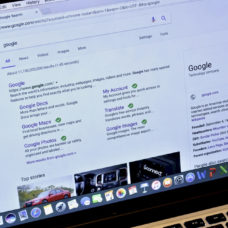In a recent episode of Javascript SEO Office Hour Hangout, Google’s Martin Splitt talked about infinite scrolling. He focused on how to prevent the search engine from indexing endless scrolled content.
Infinite scrolling is a way to continue serving similar content to users on your website.
When a reader nears the end of an article, a Javascript senses this and loads additional content for the visitor to read. Not only does this action reduce the bounce rate, but it also significantly boosts user time on the site.
Also, infinite scrolling can improve user experience. Now, here’s the problem.
When indexing the page, Google can see this additional content and index it as part of the main content. As you can imagine, this would be disastrous because it could almost certainly lead to lower rankings.
But that’s just speculation.
So, in a recent Javascript SEO Office Hour Hangout, developer at Search Engine Journal, Vahan Petrosyan asked:
“…We have implemented an infinite scroll on mobile. In the past, we had it on the desktop. My concern is would Google index the infinite scroll articles as part of the main article which is first?”
Vahan further confirmed the presence of a no-index tag in the Ajax URL for each of the pages. The developer then asked, “Is there any guarantee that the GoogleBot won’t index the appended content as a part of the main web page?”
Here’s Google’s Martin Splitt’s response.
It Depends on how you Build Your Infinite Scrolling
Martin didn’t say for sure whether Google sees additional content when site owners use infinite scrolling. Instead, using Google’s tools to confirm how the search engine is rendering a web page.
Martin Splitt said:
“I would highly recommend checking out the testing tools to see the rendered HTML because it depends a lot on how you build your infinite scroll and how we can discover additional content.”
For example, Google’s Mobile-Friendly Test also displays the HTML of the rendered webpage. That means if the search engine is indexing the additional content, you should notice it in the HTML section of the rendered web page result.
Watch the Google Office Hours Hangout here:



















Comments (0)
Most Recent